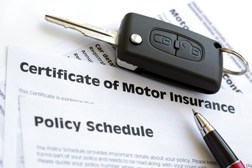SR-22 is a motor vehicle insurance document required by a court and/or DMV office which shows proof of financial responsibility. The SR-22 documentation is kept on file at the Department of Licensing, Public Safety, or Motor Vehicle, depending on the state. The ‘SR’ in SR-22 stands for ‘Safety Responsibility’.
A court or MDV office may require a driver to obtain an SR-22 document in order to reinstate any driving privileges after a DUI. An SR-22 document may also be required:

- after an at-fault car accident
- after multiple traffic violations in a short period of time
- after driving without a license
- after driving with a suspended license
An SR-22, which can be required for up to 5 years for a first-time DUI, is state-specific and what is required in one state may not be required in another. In some states repeat DUIs can require that the SR-22 policy be carried for life! Also, in some states, there is a fee to file the SR-22 document.
Even if you do not own a vehicle, you can still be required to obtain a non-owner SR-22 insurance document to be eligible to drive. If you allow your SR-22 documentation to expire, your license will be suspended.
So, what’s the big deal about an SR-22 document? Well, the big deal is that if you are required to have the SR-22 document, your insurance rates typically double, triple or even quadruple for as long as you have the SR-22 in place. This is because people who are required to have an SR-22 are generally high-risk drivers. High-risk drivers usually need to carry high-risk insurance or ‘non-standard’ auto insurance. Many major insurance carriers only carry standard insurance policies, so once you need non-standard insurance, your current policy will be cancelled and you will need to obtain a non-standard policy with a new company.
All states in the United States have SR-22 liability insurance document requirements with the exception of Delaware, Kentucky, Minnesota, New Mexico, Oklahoma, Pennsylvania, New York and North Carolina.
For more information on SR-22 documentation, contact your auto insurance provider.

 The Ins And Outs of Field Sobriety Tests
The Ins And Outs of Field Sobriety Tests
Leave a Reply
You must be logged in to post a comment.